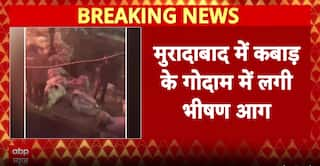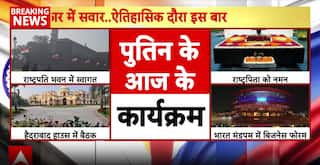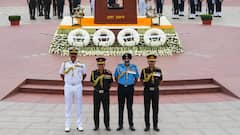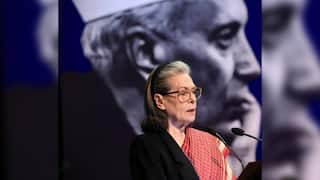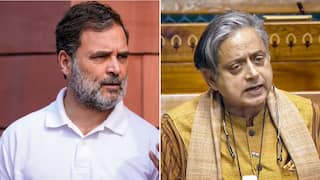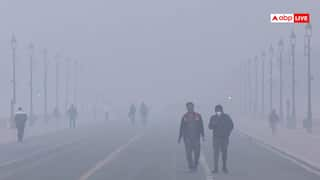What Is Modi Govt’s Rs 6 Lakh Cr Asset Monetisation Plan? Assets List, Challenges & All You Want To Know
Union Ministry of Finance has said National Monetisation Pipeline has been planned to serve as a medium-term roadmap to identify potential monetisation-ready projects across infra sectors

New Delhi: The Narendra Modi government has identified existing central assets worth Rs 6 lakh crore, which it plans to monetise over the next four years — fiscal ending 2022 to fiscal ending 2025.
The cash-strapped government is planning to tap private sector investment for the creation of new infrastructure, which it says will create employment opportunities, enabling high economic growth and “seamlessly integrating the rural and semi-urban areas for overall public welfare”.
Launching the ‘National Monetisation Pipeline (NMP Volumes 1 & 2)’ of central ministries and public sector entities on August 23, Union Minister for Finance and Corporate Affairs Nirmala Sitharaman said the plan was based on the philosophy of “creation through monetisation”.
The pipeline was developed by NITI Aayog on the mandate for asset Monetisation under Union Budget 2021-22.
“The strategic objective of the programme is to unlock the value of investments in brownfield public sector assets by tapping institutional and long-term patient capital, which can thereafter be leveraged for further public investments,” NITI Aayog Vice-Chairman Rajiv Kumar said during the launch.
What Is Asset Monetisation?
Under asset monetisation, the government transfers revenue rights to private parties for a specified period. In return, it gets upfront money, a revenue share, and a commitment of investments.
The monetisation models on Public-Private Partnership (PPP) basis include Operate Maintain Transfer (OMT) and Toll Operate Transfer (TOT), which are used in the highways sector, and Operations, Maintenance & Development (OMD), used for airports.
Real estate investment trusts and infrastructure investment trusts are structured financing vehicles used to monetise assets in the roads and power sectors.
According to the government, NMP has been planned to serve as a medium-term roadmap to identify potential monetization-ready projects, across different infrastructure sectors.
“The NMP is aimed at creating a systematic and transparent mechanism for public authorities to monitor the performance of the initiative and for investors to plan their future activities,” said NITI Aayog CEO Amitabh Kant.
Asset monetisation, he said, should not be viewed just as a funding mechanism, “but as an overall paradigm shift in infrastructure operations, augmentation and maintenance”.
He acknowledged the private sector’s resource efficiencies and ability to “dynamically adapt to the evolving global and economic reality”.
The Union Budget 2021-22 had identified monetisation of operating public infrastructure assets as a key means for sustainable infrastructure financing.
What Are The Assets Identified For Monetisation?
The NMP does not include monetisation through disinvestment and of non-core assets. Currently, it includes only the assets of central government ministries and CPSEs in infrastructure sectors.
The sectors included are roads, ports, airports, railways, warehousing, gas & product pipeline, power generation and transmission, mining, telecom, stadium, hospitality and housing.
According to government estimates, the top five sectors capture 83 percent of the aggregate pipeline value. These are roads (27%), railways (25%), power (15%), oil & gas pipelines (8%), and telecom (6%).
The assets include:
26,700 km of roads, railway stations, train operations, and tracks
2,8608 Ckt km power transmission lines
6 GW hydroelectric and solar power assets
2.86 lakh km of fiber assets
14,917 towers in the telecom sector
8,154 km of natural gas pipelines
3,930 km of petroleum product pipelines
Also on the list are 15 railway stations, 25 airports, the stake of the government in 160 coal mining projects, 31 projects in 9 major ports, 210 lakh MT of warehousing assets, 2 national stadia, and 2 regional centers.
The government has already monetised 1,400 km of national highways worth Rs 17,000 crore in the roads sector. Five more assets have been monetised through a PowerGrid InvIT raising Rs 7,700 crore, according to a report in The Indian Express.
Redevelopment of other assets including ITDC hotels could generate Rs 15,000 crore.
The Challenges
In 2013, Australia decided to monetise assets, starting with the leasing of Port Kembla and Port Botany near Sydney. Australian Competition and Consumer Commission Chairman Rod Sims, however, issued a warning last month, saying privatisation should be done to increase the efficiency of the economy, or there should be no privatisation at all.
India’s asset monetisation plan aims to unlock value in brownfield projects by engaging the private sector. Though it will only transfer revenue rights to the private parties and not ownership in the projects, there is fear that handing over control of public utilities will hurt the consumer.
“Without bureaucratic capability and regulatory acumen, the Indian program could become a transfer of taxpayer-funded assets to a handful of business groups. This is a concern because of the rising concentration of economic power in everything from transport to telecom,” opinion columnist Andy Mukherjee wrote in Bloomberg.
He cited how Singapore had to nationalise its suburban trains and signaling systems as the private operator had reportedly underinvested in maintenance, leading to frequent breakdowns.
Mukherjee also cautioned why India should see today’s gains don’t become a cost tomorrow. In New South Wales, he said, electricity prices had doubled in five years of privatising poles and wires, and the government had to bring a package to lower the burden on consumers.
Among the key challenges is also lack of interest among private investors. Past efforts have shown this is not an easy task. The slow pace of privatisation of Air India and BPCL is an example. The recently launched PPP initiative in trains has also received less-than-encouraging bids.
The MNP framework has noted lack of an identifiable revenue stream as a key impediment to the monetisation process. The railway sector has seen limited PPP success.












